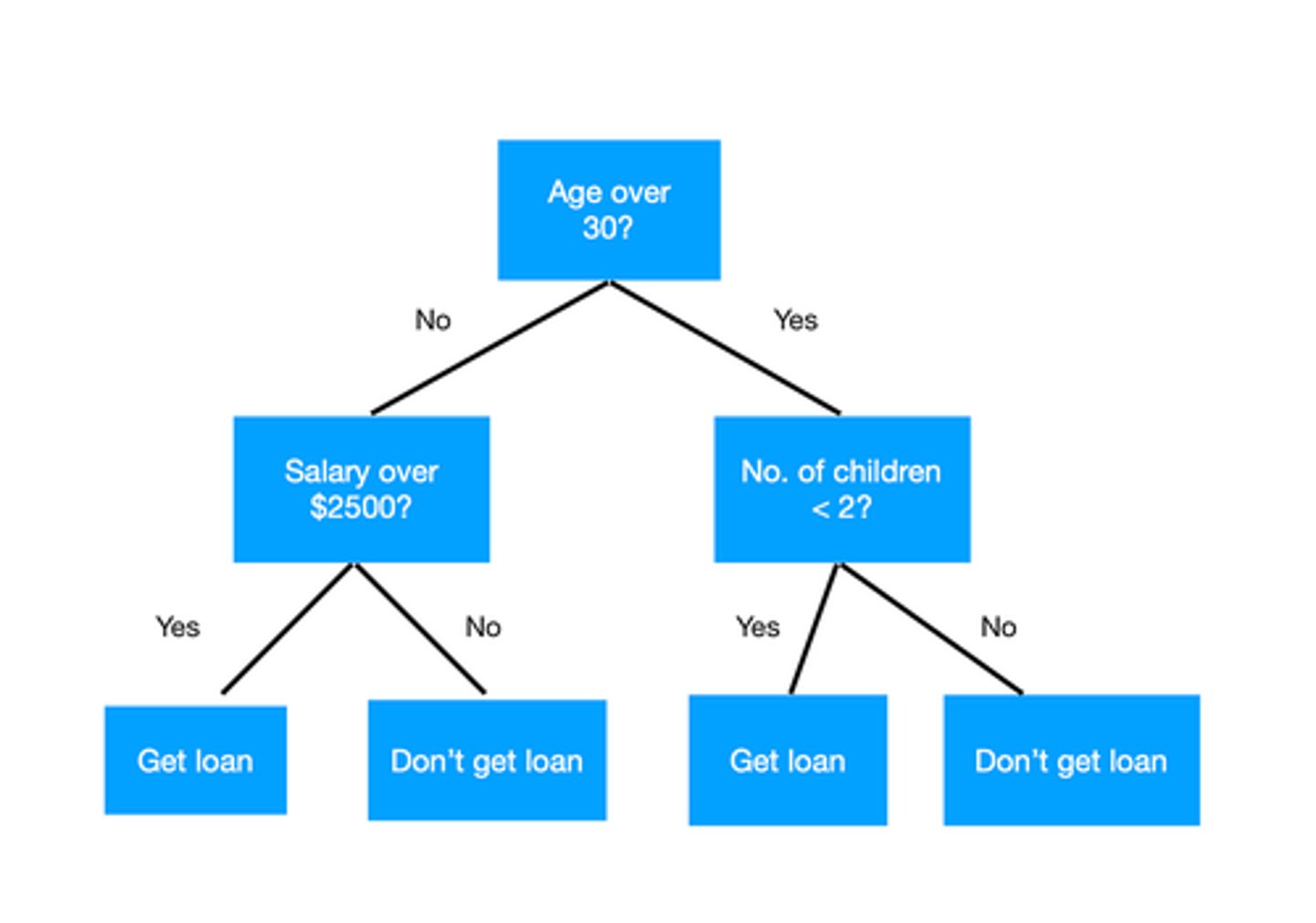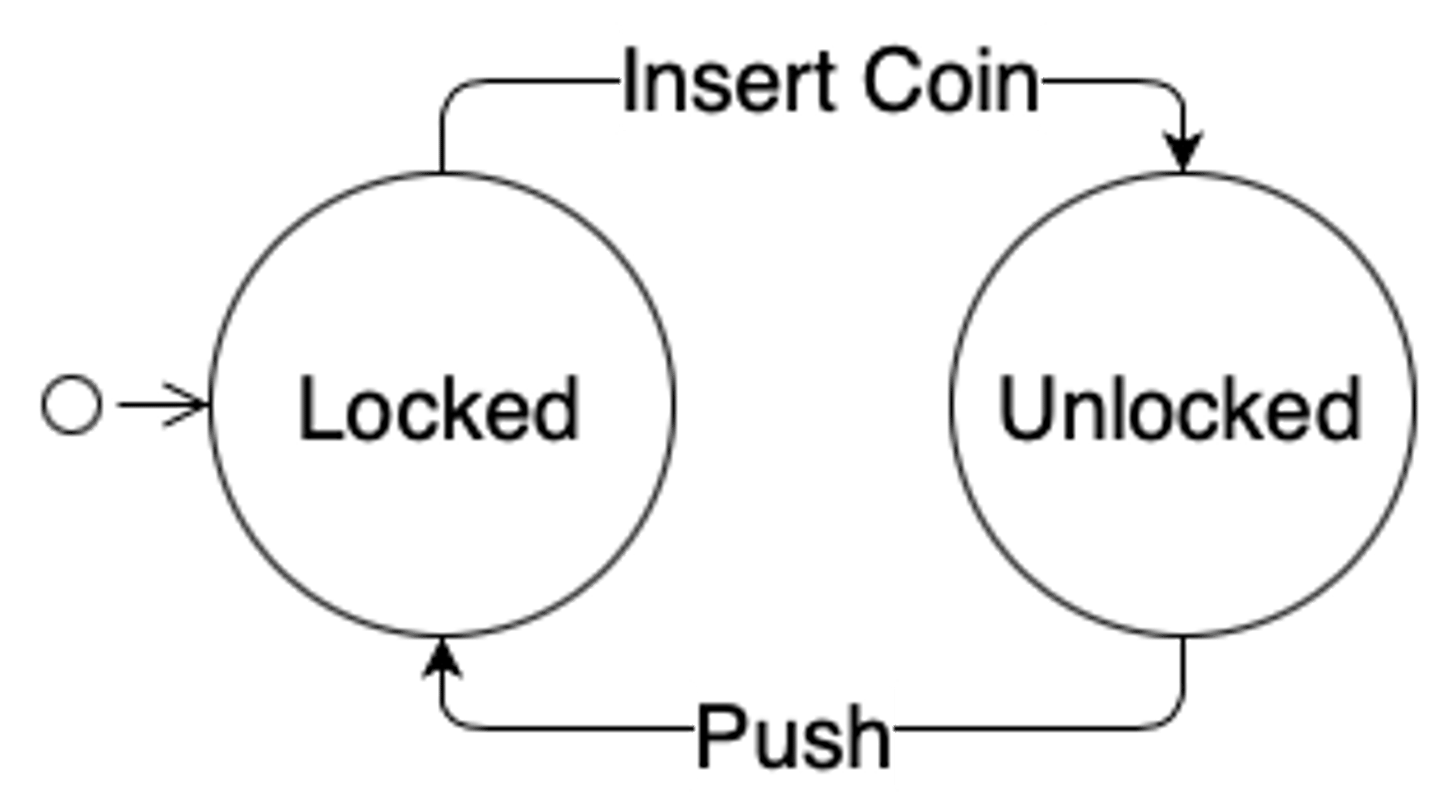Comp Sci 110 - GR #3
1/121
There's no tags or description
Looks like no tags are added yet.
Name | Mastery | Learn | Test | Matching | Spaced |
|---|
No study sessions yet.
122 Terms
AI
simulation of human intelligence by machines
What is the goal of AI?
to create systems that think and act like humans and rationally
Expert System
a computer that emulates the decision-making capabilities of a human expert
General AI
a form of AI that exhibits human cognitive abilities
General AI can think and accomplish tasks _______________
on their own
What are the capabilities of General AI?
logical thinking
plan
learn on its own
communicates in a natural language
Examples of General AI
every "cool" AI in movies (ex: terminator)
Narrow AI
a form of AI that is designed to perform a singular task or a limited set of tasks with high efficiency
Narrow AI are systems that can accomplish a wide range of problems but operate within?
a pre-defined range of functions
Capabilities of Narrow AI
cannot think for themselves
only perform tasks they were designed to accomplish
can learn when provided with training data
Examples of Narrow AI
Siri/Alexa
Telephone Menus
Video Game AI
Navigation Systems
Fully Observable AI
AI has access to all information
Partially Observable AI
AI can only see part of the picture
Competitive AI
AI competes against an agent with the opposite goal
Collaborative AI
AI can work together with agents
Discrete AI
AI with a finite number of possible states (decision trees)
Continuous AI
AI that continuously updates and improves their knowledge and capabilities based on new data without explicit retraining (Netflix's viewing recs)
Deterministic AI
outcome of an action is known with 100% certainty
Stochastic AI
the outcome of an action is known with some predictability
7 General AI Problem Types
Classification
Clustering
Optimization
Anomaly Detection
Ranking/Recommendations
Data Generation
Classification
using a set of training examples as a guide; categorize new inputs as belonging to one or more categories
Clustering
determine how to categorize or group data based on their common characteristics (EX: birthday photos, vacation photos)
How do Classification and Clustering differ?
Classification is using a training example (EX: husky) to categorize inputs (EX: husky vs wolf)
Clustering is grouping things together based on their similarities WITHOUT a training example (EX: photos making memories of you on vacation)
Optimization
given a function, determines what input(s) will result in the max/min value (EX: given your "recently watched" Netflix will suggest new movies that provide the most enjoyment)
Anomaly Detection
given a set of training examples, determines if an input is "out of the ordinary"
Ranking/Recommendations
given a series of inputs/previous actions, determines what will happen next (EX: Chess.com)
Data Generation
Produce novel data in order to achieve a specified goal (EX: inputting data into R-Script and having it produce a graph)
Sense
detects or is provided info about its environment
Think
considers possible actions and determines which one(s) it wants to perform
Act
performs the action chosen in the Think step
Which step is the most time-consuming for a Game AI? Why?
Thinking; it requires us to decide for the AI what actions to take
Hard-Coded Rules/Decision Trees
requires expert knowledge

Finite State Machine
a machine that consists of a fixed set of possible states and the transitions between them

Search Trees
depicts game states or a snapshot of the game at a given point of time and the actions that can be made at that time and the outcomes

Game State
snapshot of the game at a point
Breadth-First Search
look at all the nodes at one level (A, B, C)
Depth-First Search
pick a node and go as far down as possible (A --> A1, A2, A3...)
Heuristic
uses rules or methods to find solutions more quickly when other methods are too slow; "good enough"
Why do we use heuristics?
estimate the outcome of a decision without having to look multiple steps ahead
Algorithms
derive rules/behaviors from datasets
Datasets are used to:
train the computer
verify the computer learned the concept (not just the pattern)
Human Expertise
verify algorithms are working as intended
Machine Learning involves 3 things?
algorithms, datasets, human expertise
Model
a set of rules the AI learns from the data
Feature
columns in dataset; specific piece of information
Label
the concept we're training the model to predict; the result
Instance
row in dataset; complete set of features
Unsupervised Learning
algorithm is provided with an unlabeled dataset and is tasked with grouping similar instances
Supervised Learning
algorithm provided with a labeled dataset and is tasked with identifying the label by only looking at the features
Independent Variables
features
Dependent Variable
label
Supervised Learning Process
gather/prepare data
choose a model
train model
evaluate model
tuning
predicition
Gather and Prepare Data
what info we need, how we get that info, and how we organize it
Choose A Model
picking the right model requires understanding of the problem
Train Model
give training data to a model and let it learn
Evaluate Model
test model with data it has never seen before so we know it knows the actual concept
Confusion Matrix
where the model succeeds/fails
Tuning
adjust the settings of the AI
Epochs
how many times you show the training data to the AI and let it learn
Learning Rate
how much the algorithm changes when it makes a mistake
Prediction
use model in read world with real data
Narrow Focus
designed with a specific task; don't have general knowledge (EX: Deep Blue can beat anyone at chess but can't play checkers)
High Cost of Creation
requires humans to tell them what to do in every possible situation
Hidden Bias
AI's inherit bias from their creators (EX: Face ID favors white males)
Ambiguous Responsibility
if there is a fault in AI, we don't know if company or AI is responsible
Lack Interpretability
we don't know what a model has learned
Black Box
any system that cannot be directly observed and easily understood
Explainable AI
is artificial intelligence that is programmed to describe its purpose for making a decision
4 Ethical Criteria
transparent to inspection
predictability
robust against manipulation
responsibility
Network
a group of two or more computer systems linked together
Host
computer on a network
Client
computer trying to access the content on the server
Server
computer that stores content
Message
data we want to send
Protocols
how clients/servers talk to each other
HTTP (Hypertext Transfer Protocol)
use to request web pages
SMTP (Simple Mail Transfer Protocol)
clients use to SEND emails
FTP (File Transfer Protocol)
computers use to transfer files between each other
Who creates protocols?
IETF (Internet Engineering Task Force)
IP Address
The unique number assigned to each device on the Internet.
Public IP Address
identify a particular device on the public internet
Private IP Address
An IP address that cannot be routed over the Internet
Port
not physical; location on a computer where applications listen for incoming data
How many applications can listen on the same port?
1
TCP (Transmission Control Protocol)
ensures messages reach destination; packets can be out of order
UDP (User Datagram Protocol)
does not ensure the message makes it to the destination; packets stay in order
Circuit Switching
private dedicated channel is established for communication; constant reliable path; packets sent/received in order; no one can use it except sender and receiver
Cons of Circuit Switching
if link in circuit fails; all comms are disrupted
Packet Switching
packets travel from source to destination using best path; many comms can use the same path; if path fails, use another one;
Cons of Packet Switching
no guarantee of packets arriving; packets may be jumbled
Switch
connects multiple hosts/devices on the same network
Router
connects multiple networks; has many network addresses
IPv4
uses 8 bits for each of 4 parts
IPv6
uses 16 bits for each of 8 parts
Static
someone manually assigns specific IP addresses to a device
Dynamic
uses DHCP to assign IP addresses
NAT (Network Address Translation)
allows us to share a single IP with an entire private network
DNS (Domain Name System)
converts IP to network names (google.com)
WEP/WPA/WPA2
encrypts traffic, but anyone with key can see data
HTTPS
ensures info you send is private